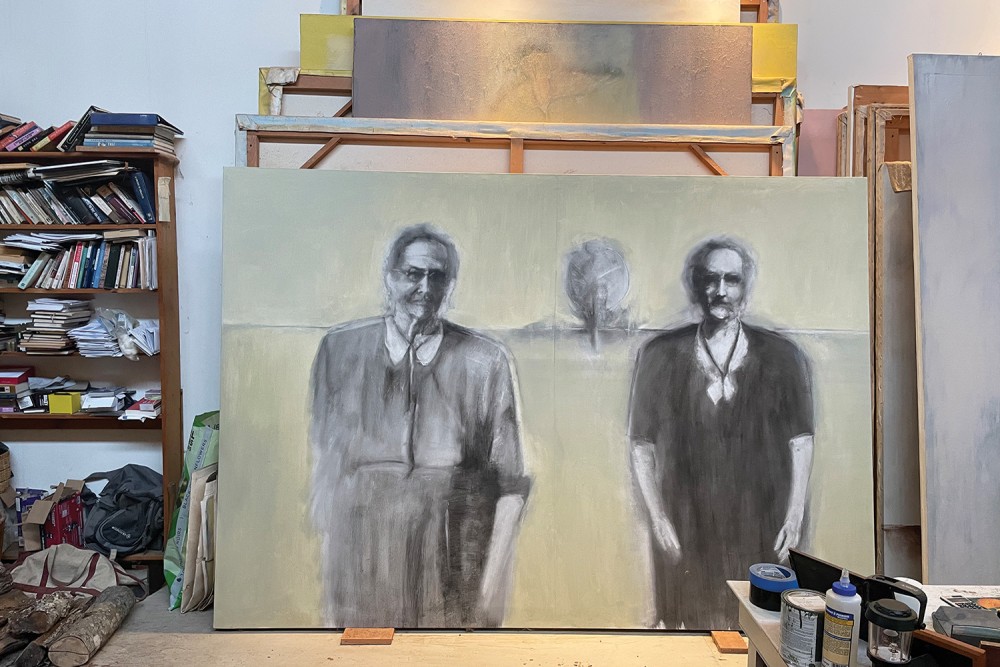Tom Gick Portrait of the artist’s grandmother

(Used by permission of the artist)
At the start of the last century, plenty of artists claimed to be mystics. Theosophy was in the ether, and avant-garde artists routinely spoke of accessing other dimensions, experiencing cosmic visions, or discerning esoteric truths. In the early 21st century, it might be tempting to declare that spiritual wellspring dry. Yet in the backwoods of Maine, in the studio of a septuagenarian painter named Tom Gick, arcane forces gush and eddy with undiminished power.
The building, fabricated by Gick himself, is a veritable temple to art. The central vaulted space is made to accommodate gigantic paintings, which line the walls like ancient monoliths. Mundane matters are squeezed to the margins, with only a tiny kitchen near the entrance and a sleeping loft above. The paintings command attention, even obedience. They may have been summoned by Gick, but they exert a stubborn life force all their own.
At the center of the room stands a massive dual portrait of Gick’s grandmother (above), who came to him in a vision at the culmination of a years-long period of psychic desperation. The image of her unexpectedly forced its way to the surface of Gick’s canvas, changing the trajectory of his life and his work, which had been mostly abstract. Under her penetrating, unrelenting stare, Gick found himself called to unify matter and spirit. In his diary from the period, he declares, “I have truly died into life, a life transfigured.”





